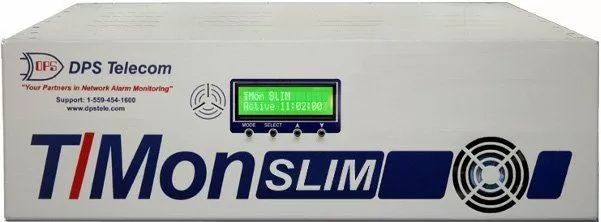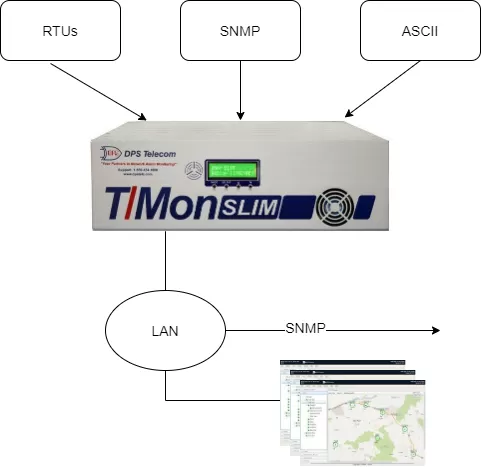Check out our White Paper Series!
A complete library of helpful advice and survival guides for every aspect of system monitoring and control.
1-800-693-0351
Have a specific question? Ask our team of expert engineers and get a specific answer!
Sign up for the next DPS Factory Training!

Whether you're new to our equipment or you've used it for years, DPS factory training is the best way to get more from your monitoring.
Reserve Your Seat TodayMost of the time, having a small network means that you will have a limited budget to invest in alarm monitoring. There are many devices that would help you keep an eye on your network, but your budget won't allow it.
You may a small budget, but your monitoring needs won't be any smaller because of that. In fact, if you don't have an efficient remote monitoring system, you'll probably be facing many other (avoidable) costs.
Here are some of the expensive problems your company will have to face without proper alarm monitoring:
It seems that you have only two choices: either you overspend now on an alarm monitoring system that your budget can't allow or you'll get nickeled and dimed to death over the long term by preventable costs.
In this article, we'll help you through this dilemma. We'll talk about how you can steer a path between spending too much money on an overkill system and leaving your network open to serious threats. You'll learn how it's possible for even a small network to enjoy the benefits of a centralized alarm monitoring system - without blowing your budget to pieces.
So, let's dive in.
Generally speaking, alarm equipment manufacturers don't supply systems for small networks. Small networks, in this context, are the ones with approximately 3 to 15 remote sites.
If that's the case for your company, then you probably already seen that most systems are way too much for what you actually need. Most network alarm systems are targeted for the major telco market, but their monitoring capacity is simply way more than you really need, which makes the price way more than you can get a budget for.
If all you need is information on 3 to 15 sites, then buying a big monitoring system will be complete overkill. Although you might look at its capacity and the features and think to yourself how they can be useful for you, you might also think about how there are capabilities that you'll never really use.
But, more than anything else, you're probably thinking that there is no way you could ever justify spending that much money for what you actually need.
Trying to manage your network with insufficient monitoring can be expensive, as well. In the long run, poor alarm monitoring can create its own set of costs.
Here are some of the dangers you can face if you don't have enough visibility of your network:
If you don't have the network visibility to proactively intervene when an issue starts, then you might not find out about it until an outage happens. Service-affecting outages cause two kinds of problems.
Remote site problems that are allowed to fester until the site goes dark are also hard on equipment. Lightning strikes, short circuits, loss of commercial power, rundown batteries, and all the other common causes of site outages can cause serious - and costly - damage to telecom gear.
If you don't have enough visibility of power conditions at your remote site to allow you to intervene and restore power generation before the batteries run down and the equipment shuts off, then you're vulnerable to thousands of dollars of damage.
If you don't have the network visibility to track remote site problems as they happen, unexpected, unplanned events can upset your maintenance schedule at any time. If a site goes down, you have to send a technician, and then you have to send another one when the next unexpected problem arises. Bit by bit, you'll be spending a lot of overtime wages on just putting out fires.
Every unplanned truck roll costs you between $150 and $600, depending on your location, the work being done at the site and your technician's skill level and salary.
It's important to consider all the costs of poor network visibility before you decide that you can cut corners on your alarm monitoring.
At the same time, that doesn't mean that your budget has miraculously expanded, just because you're more aware of your real monitoring needs. What you need is an option in between a full-scale alarm system and insufficient monitoring.
Here's some common warning signs that you don't have sufficient network alarm visibility:
If you've ever had any of these problems, you definitely need better monitoring.
The T/Mon SLIM Remote Alarm Monitoring System was designed specifically to give small networks the power of centralized alarm monitoring. It takes the power of the T/Mon LNX Remote Alarm Monitoring System and scales it to the needs of your small network.
Cost-effective and easy to install, T/Mon SLIM puts high-quality network alarm monitoring within the reach of any company and any maintenance department.

T/Mon SLIM monitors up to 64 network devices and up to 10,000 points. Exactly the right capacity for monitoring the sites you're responsible for, without paying for more capacity than you use.
T/Mon SLIM monitors DPS Telecom RTUs, including the full-featured NetGuardian 832A, the light-capacity NetGuardian 216, and the heady-duty NetGuardian 480. T/Mon also monitors SNMP devices, any telecom equipment that outputs ASCII text or TL1, and legacy RTUs from Badger, Dantel, Larse, NEC, and Pulsecom.

Despite being designed for small networks, T/Mon SLIM has everything you need to effectively monitor your sites:
You don't want to have to watch several different screens to get a full picture of what's going on in your part of the network. T/Mon SLIM presents everything on one screen, so you can tell at one glance if you have a problem.
To produce this integrated display, T/Mon accepts alarm inputs from many different devices in many different protocols.
You can order your T/Mon SLIM with exactly the capabilities that are right for you, custom-fitted to your network's exact needs.
This optional T/Mon software module enables your T/Mon SLIM to receive traps from SNMP devices, so you don't have to maintain a separate SNMP manager to view SNMP alarms. The added advantage is that SNMP traps are processed with the full power of T/Mon, instead of the bare-bones alarm presentation of the typical SNMP manager.
You don't ever have to settle for meaningless major-minor summary alarms if your T/Mon SLIM is equipped with this optional software module. Nearly all telecom equipment outputs highly detailed status reports in the form of raw ASCII text. The ASCII alarm processor parses the ASCII stream and extracts alarm messages, which it converts to real-time T/Mon notifications.
Who needs a 24-hour manned NOC when simple, cost-effective machinery can do the job for you? T/Mon SLIM's round-the-clock alerts take alarms directly to techs in the field. Email notification sends alarms to any cellphone and creates an automatic record of alarms.
T/Mon SLIM's automatic alarm escalation ensures alarms aren't left unnoticed. If the on-call tech doesn't acknowledge an alarm, T/Mon SLIM will first send another notification to the tech, if there's no response, then T/Mon will send an alert to a supervisor.
You should always be able to access your alarm information from any location. T/Mon SLIM's web browser interface lets you securely connect to your alarm system from any computer.
Remote web access lets on-call technicians access the system to acknowledge alarms and drill down on alarms for more information. A web interface also lets you connect to your monitoring system without extra software or another interface to learn.
Lots of network events are not critical in themselves, but they can represent big problems when they happen together.
For example, a low battery isn't a big deal, neither is a generator failure. But, when the two events happen together, it's a little bit more serious. And, when an AC power failure happens at a critical site, and the battery is low and the generator can't recharge, you have a serious problem.
T/Mon SLIM's customizable Derived Alarms can track all that for you - and send you an escalating series of notifications as the problems get worse.
Since T/Mon SLIM can track multiple alarm inputs, it can also use those inputs to trigger automatic corrective actions - turning on lights and locking doors in response to intrusion alarms, turning off equipment before it goes into damaging thermal or low power shutdown or notifying you and the fire department in response to a high-temperature alarm.
This gives you a tireless first line of defense that's more reliable than any human.
T/Mon SLIM provides regional alarm monitoring that's compatible with your company's overall network management. T/Mon SLIM can forward alarms to a central T/Mon LNX or a central SNMP manager.
Alarm forwarding enables your T/Mon SLIM to act as a network node that collects alarms from your sites and forwards them to the central NOC. Plus, you can selectively filter which alarms are forwarded to the NOC, so you can get all the detail you need to see without overwhelming the NOC with too much information.
You're never taking any risk when you work with us. T/Mon SLIM is backed up by a two-year hardware warranty, the best tech support in the industry, and a 30-day, no-risk, money-back guarantee.
Test your T/Mon SLIM at your site for 30 days. If you're not satisfied for any reason, all you have to do is to send it back for a full refund. We don't want your money unless you're completely satisfied. It's that simple.
We won't sell you any alarm equipment without thoroughly researching your network and its individual needs. If the T/Mon SLIM is not the best technical and business solution for your requirements, our applications engineer will suggest a different solution.
If you've determined that the T/Mon SLIM is the right option for your network, just reach out to us and ask for a demo.
Our team will be happy to help you define your specific requirements and answer any questions you might have. With straightforward information, you'll be able to make informed decisions about your alarm monitoring.

Morgana Siggins
Morgana Siggins is a marketing writer, content creator, and documentation specialist at DPS Telecom. She has created over 200 blog articles and videos sharing her years of experience in the remote monitoring industry.